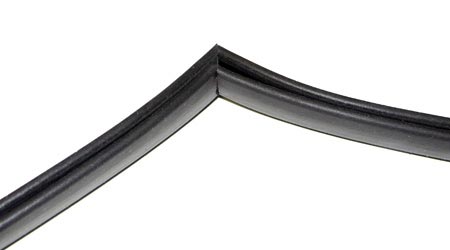EMI Shielding Products
- Custom Gasket Fabrication
- Connector Gaskets
- Bonded O Ring
- Custom Gaskets
- Conduct-O-Knit Knitted Wire Mesh
- Conduct-O-Seal Combo Gasket
- Conduct-O-Elastomer
- Conduct-O-Seal Oriented Wire in Silicone Gasket Material
- Conduct-O-Mesh Tape
- Conduct-O-Foam
- Conduct-O-Bond
- Optical Filters For Electronic Displays
- Shielded Vent Panels
- ESC Board Level Shielding
- 300 Series
EMI Shielding Material Options
Wire Oriented Silicone
 Various materials can be used for EMI (electromagnetic interference) shielding, and the effectiveness of these materials can vary depending on the specific properties of the material and the frequency of the electromagnetic waves being blocked. Some common materials used for EMI shielding include:
Various materials can be used for EMI (electromagnetic interference) shielding, and the effectiveness of these materials can vary depending on the specific properties of the material and the frequency of the electromagnetic waves being blocked. Some common materials used for EMI shielding include:
Copper: Copper effectively blocks a wide range of frequencies, including low-frequency electromagnetic waves and high-frequency microwave radiation.
Aluminum: Aluminum is generally less effective at blocking high-frequency microwave radiation than copper but may be a more cost-effective option for some applications.
Stainless steel: Stainless steel is a metal resistant to corrosion and has good electrical conductivity. It is commonly used for EMI shielding, particularly at lower frequencies.
Conductive elastomers: Conductive elastomers are rubber-like materials modified to be electrically conductive. They are flexible and resistant to corrosion, making them useful for EMI shielding in various applications.
Metallic foams: Metallic foams are porous materials made from metal or metal-coated fibers. They have a high surface area.
The shielding effectiveness of different materials refers to their ability to block or reduce the transmission of electromagnetic radiation. The shielding effectiveness of a material can be influenced by various factors, including the material's properties, the frequency of the electromagnetic waves, and the thickness and orientation of the material.
Top Reasons to Use Wire Oriented Silicone for EMI Shield Purposes
Wire oriented silicone is commonly used for EMI shielding. Wire oriented silicone is reinforced with a metal wire, such as copper or stainless steel. This gives the material a combination of electrical conductivity and flexibility, making it well-suited for EMI shielding applications.
The shielding effectiveness of wire oriented silicone can vary depending on the specific properties of the material and the frequency of the electromagnetic waves being blocked. Wire oriented silicone is more effective at blocking low-frequency electromagnetic waves, such as those in the radio frequency (RF) range, than it is at blocking high-frequency waves, such as those in the microwave range.
The thickness of the wire oriented silicone can also affect its shielding effectiveness. Generally, thicker materials provide better shielding performance but may also be more challenging to work with or require more space.



